Unlock Success with Triple Constraints of Project Management
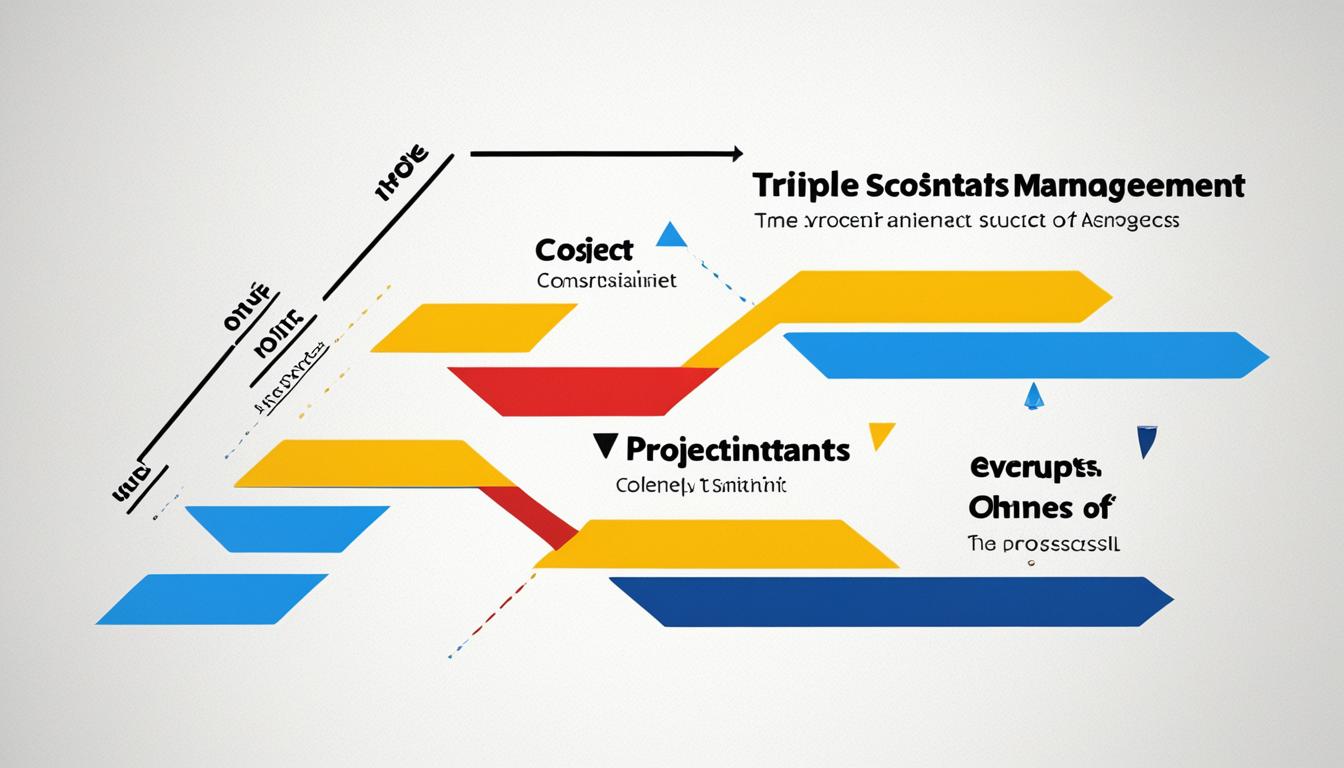
“Time, cost, and scope are the three sides of the project management triangle. Balancing them is the key to unlocking success.”
Managing a project successfully requires a delicate balance between time, cost, and scope. These three factors, known as the Triple Constraints or the Project Management Triangle, are interrelated and interdependent. Time refers to the schedule or timeline within which a project must be completed. Cost pertains to the budget allocated for the project. Scope defines the work that needs to be done to meet the project’s objectives.
Projects often face challenges such as scope creep, where the project scope expands beyond the initially defined boundaries, leading to time and cost overruns. It is essential for project managers to have a solid understanding of the Triple Constraints and how changes in one constraint can impact the others. By effectively managing the triple constraints, project managers can navigate the complexities of project management and steer their projects toward success.
In this article, we will dive deeper into the Triple Constraints of project management, exploring the intricacies of each constraint and the challenges that arise in balancing them. We will also discuss the role of quality in project success and provide practical tips for navigating time, cost, and scope management. Whether you are a seasoned project manager or new to the field, this article will equip you with valuable insights to enhance your project management skills and unlock success.
Key Takeaways:
- The Triple Constraints of project management consist of time, cost, and scope.
- Changes in one constraint can impact the others, necessitating trade-offs and careful decision-making.
- Quality is closely tied to the Triple Constraints and is crucial for project success.
- Effective time, cost, and scope management techniques are essential for balancing the Triple Constraints.
- Continuous monitoring and adaptation are key to successfully managing the Triple Constraints throughout a project’s lifecycle.
Understanding the Triple Constraints
The Triple Constraints, also known as the “Iron Triangle” or the “Project Management Triangle,” are the three fundamental elements that play a crucial role in every project. They are time, cost, and scope. Let’s dive deeper into each of these constraints to gain a better understanding of their significance.
Time
Time is the backbone of any project. It refers to the schedule or timeline within which a project must be completed. Meeting deadlines and delivering on time is essential for project success. Efficient time management involves careful planning, setting realistic milestones, and diligently tracking progress to ensure timely completion.
Cost
Cost is another vital aspect of project management. It encompasses the budget allocated for the project, including resources, materials, and other expenses. Effectively managing project costs involves accurate estimation, budget allocation, cost tracking, and control. Keeping costs under control is crucial to achieving project objectives while maximizing efficiency.
Scope
The scope defines the work that needs to be accomplished to meet the project’s objectives. It outlines the deliverables, tasks, and activities required for project completion. Managing project scope involves clearly defining project requirements, objectives, and boundaries. Changes in scope, often known as scope creep, can have a significant impact on project time and cost. Maintaining a well-defined and controlled scope is essential to avoid project overruns and ensure successful outcomes.
To have a better visual representation, let’s take a look at the following table:
| Triple Constraints | Description |
|---|---|
| Time | The schedule or timeline within which the project must be completed. |
| Cost | The budget allocated for the project, including resources and expenses. |
| Scope | The work that needs to be done to meet the project’s objectives. |
Understanding the triple constraints is crucial for project managers and stakeholders. The interdependence of time, cost, and scope requires careful consideration and effective management. By balancing these constraints, project managers can optimize resources, meet deadlines, and deliver successful project outcomes.
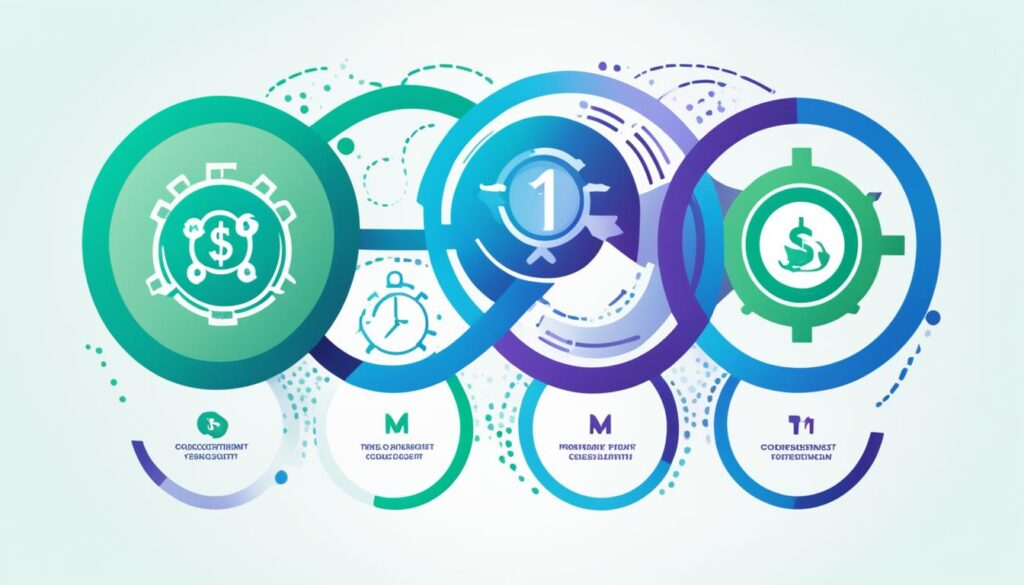
The Delicate Balancing Act
The Triple Constraints of project management, also known as the “Iron Triangle” or the “Project Management Triangle,” represent a delicate balancing act that project managers need to navigate. These constraints include time, cost, and scope, and they are interrelated and interdependent.
When it comes to time, project managers often face tight deadlines and the need for quick delivery. In order to meet these deadlines, they may have to allocate additional resources or even work overtime. However, this can lead to increased costs, as additional resources and overtime usually come with a price tag.
On the other hand, reducing project costs may require trimming the project scope. This means that certain aspects of the project may have to be scaled back or eliminated in order to stay within budget. However, reducing the scope can have implications for both time and cost. A smaller scope may result in a shorter project duration, but it can also lead to a compromise in quality.
Conversely, a larger project scope typically demands more time for completion. This is because a larger scope involves more work, tasks, and deliverables that need to be accomplished. Project managers need to carefully manage the time required for each aspect of the project in order to ensure that it stays on track.
The Triple Constraints of project management are closely interconnected, which means that changes in one constraint often have an impact on the others. For example, extending the project timeline to accommodate a larger scope may require additional resources, leading to increased costs. Similarly, reducing the project budget may result in a smaller scope and a shorter project duration.
The challenge for project managers lies in finding the right balance between time, cost, and scope. They need to make informed decisions that take into account the implications of any changes in one constraint on the others. It requires careful planning, effective communication, and thorough monitoring throughout the project lifecycle.
To illustrate the delicate balancing act of the Triple Constraints, consider the following example:
| Constraint | Scenario A | Scenario B |
|---|---|---|
| Time | The project timeline is fixed and cannot be extended. | The project timeline can be extended if needed. |
| Cost | The budget is limited and cannot be increased. | The budget can be increased if necessary. |
| Scope | The project scope is fixed and cannot be reduced. | The project scope can be reduced if required. |
In Scenario A, where time, cost, and scope are fixed, the project manager must find ways to deliver the project within the given constraints. This may involve optimizing resource allocation and closely managing the progress of tasks.
In Scenario B, where time and cost can be adjusted, the project manager has more flexibility to meet the project objectives. They can extend the timeline or allocate additional resources to complete a larger scope of work, if necessary.
As this example demonstrates, project managers face the challenge of balancing the Triple Constraints to achieve project success. By carefully managing time, cost, and scope, they can optimize project outcomes and ensure the delivery of high-quality results.
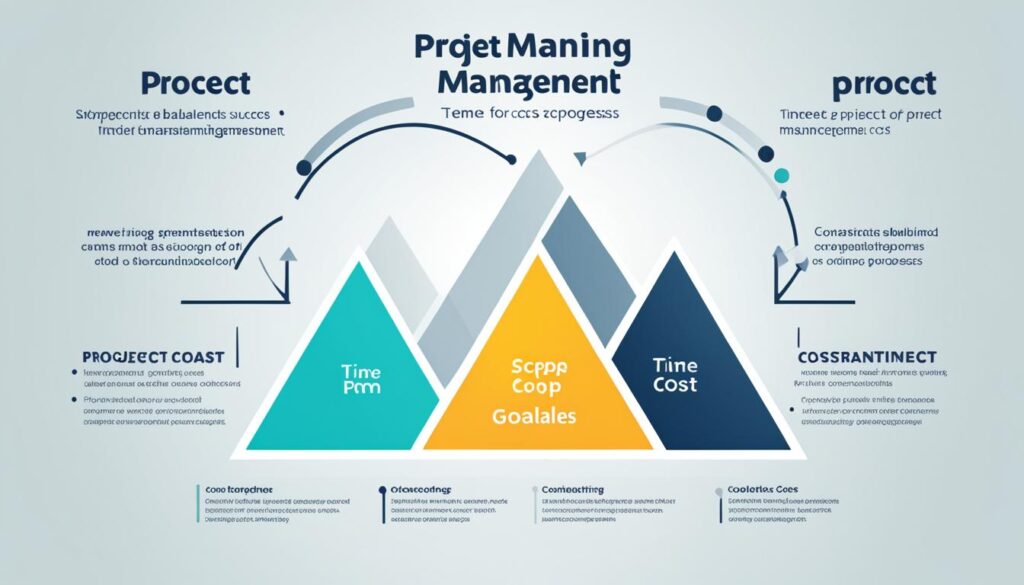
Challenges and Trade-offs
Balancing the Triple Constraints in project management can be a formidable challenge. Alterations made to one constraint invariably influence the other aspects of time, cost, and scope, necessitating a careful balancing act. In particular, extending the project timeline to accommodate a larger scope can directly impact costs and resource availability. Conversely, tightening the project budget may require trimming the project scope. These trade-offs test the project manager’s ability to make informed decisions and strike the right balance to ensure project success.
Effective communication, negotiation, and decision-making are the key skills that enable project managers to navigate these trade-offs successfully.
The Impact of Trade-offs
When project managers face the need for trade-offs, it is crucial to consider the implications for each constraint. Let’s explore some of the common trade-offs that project managers encounter:
- Time vs. Cost: Extending the project timeline to accommodate additional work may lead to increased costs. Conversely, imposing strict deadlines may require additional resources, leading to increased expenditure.
- Cost vs. Scope: Reducing the project budget might result in a decrease in the scope of work and deliverables. On the other hand, increasing the scope may require additional funds for its successful completion.
- Scope vs. Time: Expanding the project scope often requires more time to complete the additional work. Conversely, limiting the scope may allow for a faster project completion.
Understanding these trade-offs and their implications is crucial for project managers to make informed decisions that align with the project’s goals and constraints.
| Challenges | Trade-offs |
|---|---|
| Interrelated and interdependent nature of the triple constraints | Time, cost, and scope trade-offs |
| Impact of extending project timeline on costs and resource availability | Time vs. cost trade-off |
| Effect of reducing project budget on scope and deliverables | Cost vs. scope trade-off |
| Relationship between project scope and required time for completion | Scope vs. time trade-off |
Managing the triple constraints requires a nuanced understanding of the challenges involved and the ability to navigate the trade-offs effectively. Project managers must weigh the potential impacts on time, cost, and scope before making decisions that will steer the project towards success.
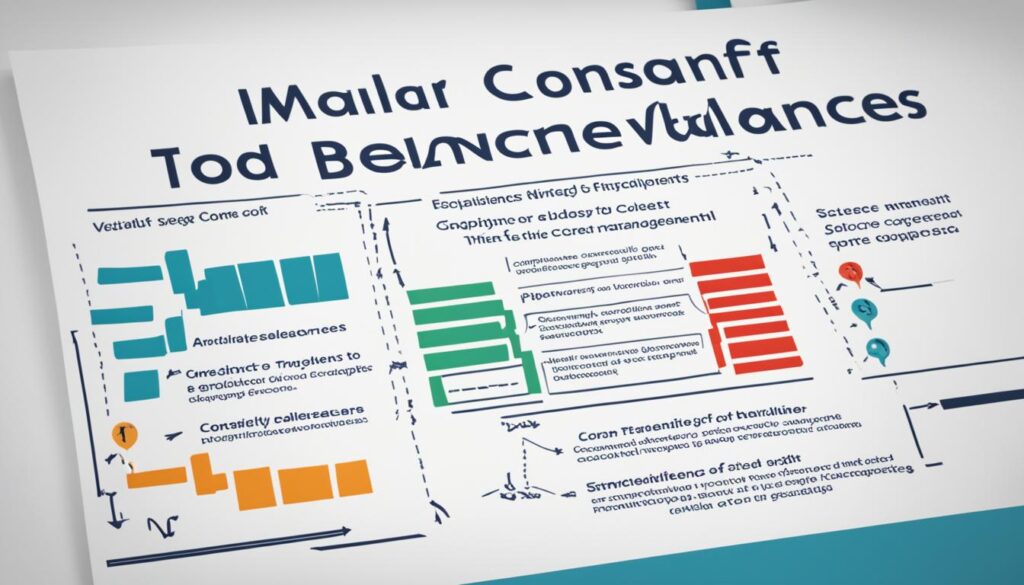
The Role of Quality
While not officially part of the Triple Constraints, quality is intricately linked to them. Delivering the project within time and budget constraints without compromising quality is essential. Ensuring quality throughout the project lifecycle helps avoid costly rework and maintains stakeholder satisfaction. Quality is a critical aspect of project success.
When it comes to project management, quality refers to the degree to which a project’s deliverables meet the specified requirements and expectations. It encompasses both the processes used to create those deliverables and the final product or service itself. By focusing on quality, project managers can enhance customer satisfaction, increase the likelihood of achieving project objectives, and ultimately contribute to overall project success.
Quality management involves careful planning, monitoring, and control of project deliverables to ensure they meet the desired standards. This includes defining clear quality objectives, establishing quality assurance processes, conducting inspections and audits, and implementing corrective actions when deviations occur.
In the context of the Triple Constraints, maintaining quality often requires trade-offs. Project managers must balance the need for delivering high-quality results with the time and cost constraints imposed by the project. This requires making informed decisions based on prioritization, risk assessment, and stakeholder input. By effectively managing the triple constraints, project managers can find the optimal balance that maximizes quality and project success.
One of the key techniques used in quality management is the Plan-Do-Check-Act (PDCA) cycle, also known as the Deming cycle. This iterative approach allows project teams to continuously improve processes and deliverables by planning, implementing, evaluating, and refining their work. The PDCA cycle enables project managers to address quality issues promptly, implement preventive measures, and ensure ongoing quality control throughout the project lifecycle.
Benefits of Quality Management in Project Success
Ensuring quality throughout a project offers numerous benefits, contributing to its overall success:
- Enhanced customer satisfaction: Delivering high-quality results fosters customer trust and satisfaction, leading to positive feedback, repeat business, and increased referrals.
- Effective risk management: Attention to quality helps identify potential risks and proactively address them, reducing the likelihood of costly errors, rework, and project failures.
- Optimized resource utilization: By minimizing waste and rework, quality management enables more efficient resource allocation, reducing costs and maximizing productivity.
- Improved stakeholder collaboration: A focus on quality facilitates effective communication and collaboration among project stakeholders, enhancing teamwork, aligning expectations, and fostering a positive project environment.
- Higher project success rates: Projects that prioritize quality and meet stakeholder expectations are more likely to achieve their objectives, resulting in higher success rates and stronger organizational reputation.
Ultimately, quality is not just an added feature of a successful project; it is an integral component of project success itself. By integrating quality management practices into project planning, execution, and monitoring processes, project managers can ensure that their teams deliver high-quality outcomes while effectively managing the triple constraints.
Navigating Time, Cost, and Scope Management
Effectively managing time, cost, and scope is crucial for project success. By understanding and navigating the triple constraints of project management, you can ensure that your projects are delivered on time, within budget, and meet the defined objectives.
Time Management:
Time management involves setting realistic project timelines and implementing strategies to optimize project schedules. By estimating task durations accurately and using techniques like the Critical Path Method (CPM) and the Program Evaluation Review Technique (PERT), you can effectively allocate resources and prioritize activities to meet project milestones.
Cost Management:
Managing project costs is essential to stay within budget and achieve financial objectives. Accurate cost estimation based on historical data and benchmarks is crucial for effective cost management. Tracking actual expenses against planned budgets and utilizing techniques like Earned Value Management (EVM) can help you monitor and control costs throughout the project lifecycle.
Scope Management:
Scope management involves defining clear project objectives, establishing the scope boundaries, and aligning the project’s deliverables with its goals. Conducting stakeholder analysis and involving key stakeholders in the scope definition process can ensure that project requirements are well-defined and expectations are met. Effective scope management helps prevent scope creep and ensures that project resources are focused on delivering the agreed-upon scope.
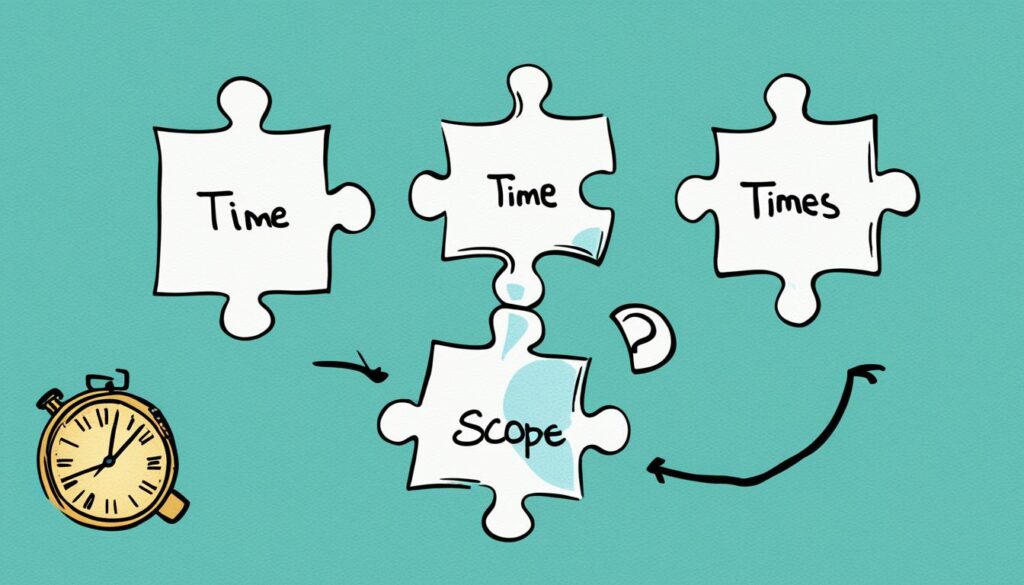
By effectively navigating time, cost, and scope management, project managers can optimize resource allocation, mitigate risks, and deliver successful projects that meet stakeholder expectations. The integration of these three essential components allows for a balanced approach in managing projects, ensuring project completion within the given constraints.
| Triple Constraints of Project Management | Key Elements |
|---|---|
| Time Management | Schedule, milestones, task durations |
| Cost Management | Budget, cost estimation, expenses tracking |
| Scope Management | Objectives, deliverables, scope definition |
Conclusion
Mastering the delicate balance between time, cost, and scope is the key to unlocking success in project management. The Triple Constraints, as the backbone of project management, play a vital role in achieving project objectives while optimizing resources.
By continuously monitoring, evaluating, and adapting to changes in these constraints, project managers can navigate the complexities of project management and steer their projects towards success. Effective communication, negotiation, and decision-making skills are essential in managing the triple constraints.
Project management success lies in the ability to strike a delicate equilibrium between these constraints. Balancing time, cost, and scope is crucial for project success, ensuring that projects are delivered within the set schedule, allocated budget, and defined work scope.
As project managers strive for success, they must remain vigilant in managing the triple constraints. Being mindful of the interdependencies and making informed trade-offs can lead to optimal project outcomes and stakeholder satisfaction. Remember, the triple constraints of project management form the foundation for achieving project success.






